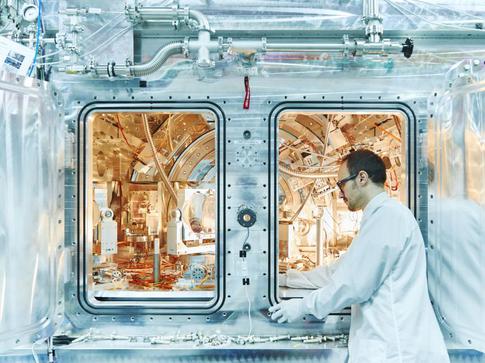XFEL: Accurate temperature snapshots
Accurate temperature snapshots
What does it take to accurately measure the temperature of a material which remains in a stable condition for just a fleeting nanosecond (one millionth of a second)? Consider using the high energy density (HED) instrument at European XFEL. And this is what an international team of researchers, with lead researchers from SLAC National Accelerator Laboratory, US, Oxford University, UK, and European XFEL, have done. Establishing methods to accurately measure temperatures in rapidly-evolving, transient systems is important for diverse purposes such as developing materials for spacecraft thermal shields, which face extreme changes in temperature and pressure when re-entering the Earth’s atmosphere, or in the study of the interior of giant planets such as Jupiter, Saturn, Uranus and Neptune.
The results, which have been published in Nature’s Scientific Reports, are based on the data obtained from the very first HED beamtime and first user experiment held in 2019. “Directly measuring the temperature in transient systems is very complicated. In order to get a good temperature measurement in such systems, you need to take a snapshot with a short ‘flash’ of X-rays.” says Ulf Zastrau, Group Leader of HED.
“We used a small piece of artificially-grown diamond to measure what is known as the bulk temperature, which means we measured the temperature of all the atoms inside the diamond crystal,” explains Zastrau. In a crystal, the atoms in the lattice vibrate in waves, known as ‘phonons’. The phonon wave can give the X-rays a ‘kick’ or the X-rays can give the phonon wave a ‘kick’. And by analyzing the X-ray scattering that results due to these kicks, one can measure changes in the X-ray photon energy and lattice temperature.
“Currently, European XFEL is the only facility where such a setup is built in as a standard diagnostic tool, meaning that this method can be employed with a minimum effort for user experiments,” Zastrau adds. The result is also an example of the importance of international collaboration across different facilities. "Pioneering preparation work and first feasibility studies were done at the SLAC National Accelerator Laboratory facilities," says Zastrau. "We were building up on this expertise, and the lead authors of this publication are part of the team that did the feasibly studies."

